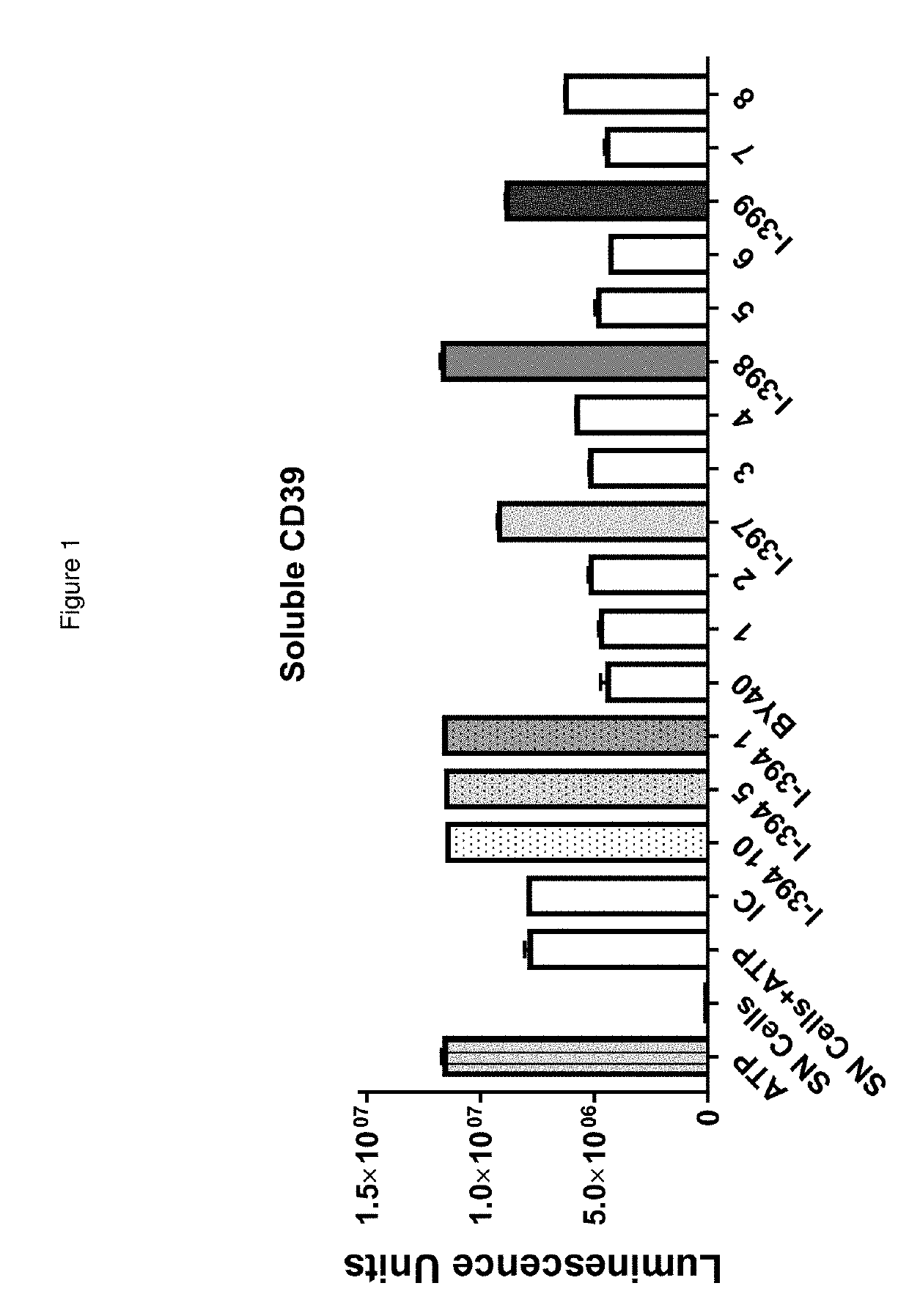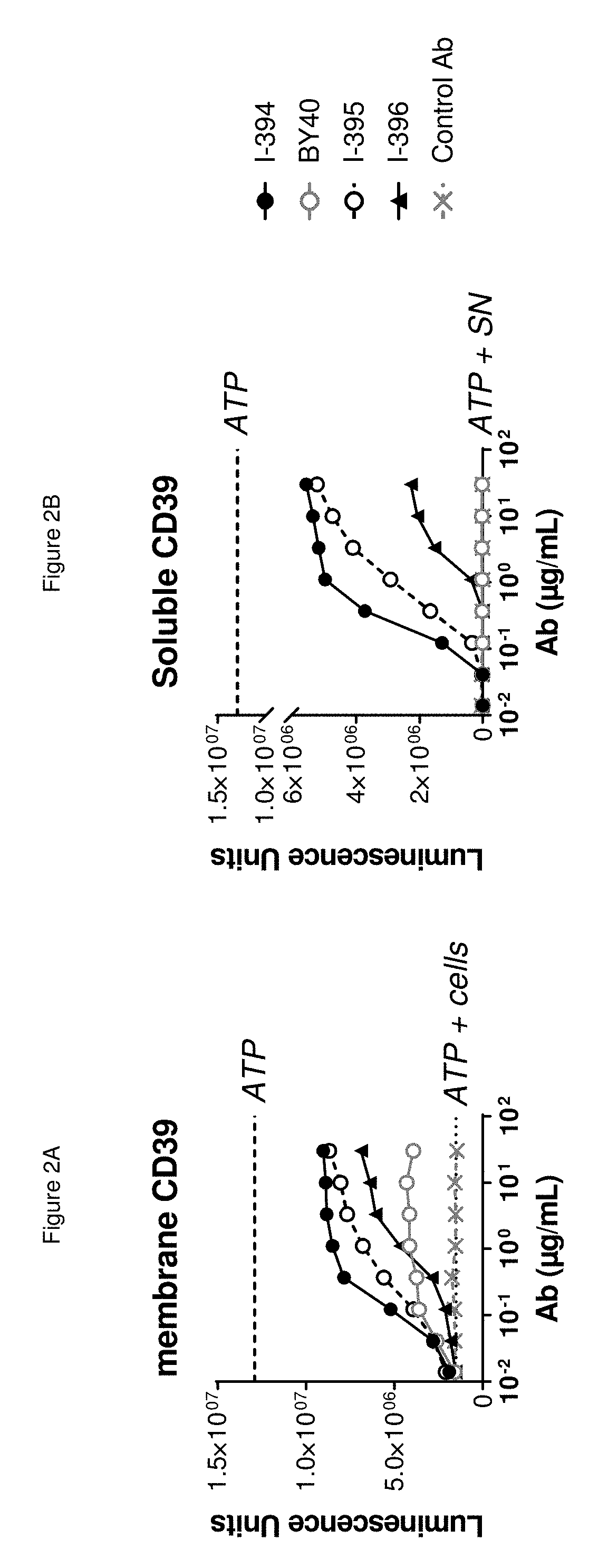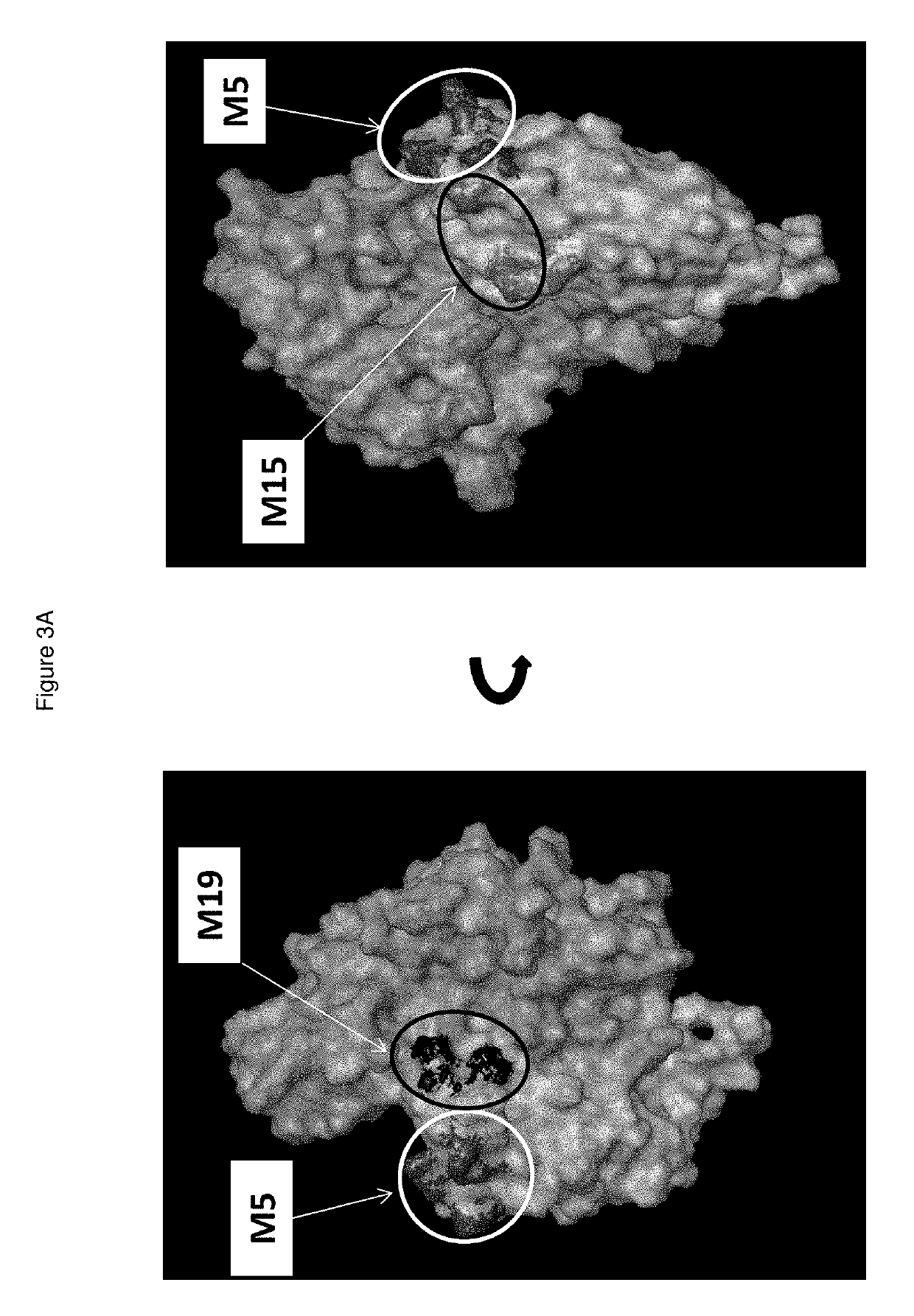Restoration of t cell activity via the cd39/cd73 axis
a t cell activity and cd73 technology, applied in the field of cd39 neutralizing agents, can solve the problems of difficult blocking of enzymatic active sites using protein agents such as antibodies, and achieve the effect of dramatic reduction of immunosuppression and reduction of immunosuppression
- Summary
- Abstract
- Description
- Claims
- Application Information
AI Technical Summary
Benefits of technology
Problems solved by technology
Method used
Image
Examples
example 1
apping of Known Neutralizing CD39 mAbs
[0921]In order to gain insight into the function of antibodies that inhibit the enzymatic (ATPase) activity of cellular CD39, we investigated the epitopes bound by antibodies that have been reported to inhibit the ATPase activity of CD39 in cellular assays: BY40 disclosed in PCT publication no. WO2009 / 095478.
[0922]In order to define the epitopes of anti-CD39 antibodies, we designed CD39 mutants defined by substitutions of amino acids exposed at the molecular surface over the surface of CD39. Mutants were transfected in Hek-293T cells, as shown in Table 1, using numbering of SEQ ID NO: 2.
[0923]Dose-ranges of I-394 (10-2.5-0.625-0.1563-0.0391-0.0098-0.0024-0.0006 μg / ml) were tested on the 20 generated mutants by flow cytometry. BY40 antibodies both had complete loss of binding to cells expressing mutant 5 of CD39, without loss of binding to any other mutant. Mutant 5 contains amino acid substitutions at residues Q96, N99, E143 and R147. The positi...
example 2
tralizing CD39 mAbs are Unable to Inhibit the ATPase Activity of Recombinant Soluble CD39 Protein
[0924]The two antibodies that have been reported to inhibit the ATPase activity of CD39 in cellular assays (BY40 and BY12) were assessed to determine whether are able to inhibit the ATPase activity of recombinant soluble CD39 protein. The inhibition by antibodies of the enzymatic activity of soluble CD39 protein produced as described above was evaluated using Cell Titer Glo™ (Promega, reference G7571). The inhibition by antibodies of the enzymatic activity of cellular CD39 protein was evaluated as indicated above.
[0925]As expected, BY40 inhibited the ATPase activity of CD39 protein in cells. However, BY40 was unable to inhibit the enzymatic activity of soluble CD39 protein. FIG. 2B shows a comparison of BY40 with the new antibodies identified herein.
example 3
for New mAbs to Block sCD39 Activity
[0926]A series of immunizations were carried out in order to seek antibodies that neutralize the ATPase activity of sCD39. To obtain anti-human CD39 antibodies, animals were immunized with the recombinant human CD39-M2 extracellular domain recombinant protein described above. In total, 15 series of immunizations were carried out using different protocols and in different animals. Included were different mice strains, rats and rabbits.
[0927]In initial immunization protocols, the primary screen involved testing supernatant (SN) of growing clones by flow cytometry using wild type CHO and CHO expressing huCD39 cell lines. Cells were stained with 0.1 μM and 0.005 μM CFSE, respectively. For the flow cytometry screening, all cells were equally mixed and the presence of reacting antibodies in supernatants was revealed by Goat anti-mouse polyclonal antibody (pAb) labeled with APC. For antibodies that bound huCD39, supernatants were then screened for inhibi...
PUM
| Property | Measurement | Unit |
|---|---|---|
| Inhibition | aaaaa | aaaaa |
Abstract
Description
Claims
Application Information
 Login to View More
Login to View More - R&D
- Intellectual Property
- Life Sciences
- Materials
- Tech Scout
- Unparalleled Data Quality
- Higher Quality Content
- 60% Fewer Hallucinations
Browse by: Latest US Patents, China's latest patents, Technical Efficacy Thesaurus, Application Domain, Technology Topic, Popular Technical Reports.
© 2025 PatSnap. All rights reserved.Legal|Privacy policy|Modern Slavery Act Transparency Statement|Sitemap|About US| Contact US: help@patsnap.com



